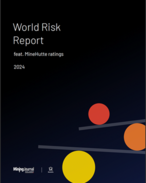This article is 4 years old. Images might not display.
It has already reduced to its operational emissions by 9% this year and 6% the year before that.
Orica is also actively working to reduce its exposure to thermal coal to keep investors happy.
On the emissions front the priority will be to get rid of industrial process emissions and nitrous oxide abatement. Those account for 55% of Orica's operational emissions.
The company will be adopting proven low emissions technologies and making use of innovation and technological expertise to reduce emissions.
Orica chief financial officer Chris Davis said the operational emissions reduction goals had also been embedded in the key performance indicators for its manufacturing executives.
"It's a fairly substantial proportion of those KPIs," he said.
Those KPIs are linked to the executives' short-term incentives.
Davis said capital requests for emissions abatement technology were already being submitted.
Orica's Carseland ammonium nitrate plant in Canada will be the first cab off the emissions abatement rank followed by its Kooragang Island and Yarwun plants in Australia.
Davis said Orica had been working with the government in Canada and done some emissions work there already.
"Also, we have a major turnaround happening there in 2021," he said.
Those turnarounds, when the manufacturing plant is shutdown for maintenance, are an ideal time to introduce emissions abatement technologies.
The Burrup technical ammonium nitrate plant Orica has in partnership with Yara in Western Australia's Pilbara is not included in the initial push for two reasons.
Firstly, the plant is operated by Yara.
However, perhaps more importantly, is that Burrup is a much more modern plant than Carseland, Koorangang Island or Yarwun.
Davis said Orica would get far more bang for its emissions abatement buck from those older plants at this stage.
However, it is likely attention will turn to the Pilbara plant in the future as the other plants' emissions reduction efforts come to fruition.
Davis said Orica had been looking at climate change for a number of years and had an ultimate aim of reaching zero net emissions by 2050.
"We've done a fair bit of analysis to see how we get there," he said.
Mounting society pressure to reduce emissions is part of the driver behind the push.
"We've had one or two customers asking us what we're doing about it [climate change]," Davis said.
"We're also looking to scope three emissions."
In some ways it seems Orica is far better placed to reduce its scope three emissions than some of its customers such as iron ore miners.
Iron ore miners, for example, have no say in how their iron ore is processed once the customer takes hold of it.
Orica can have a direct input into the emissions from the use of its products through better initiation or chemical formulation.
However, Davis said explosives only counted for 1% of the emissions on its customers' sites.
He said there was far more impact to be had by dealing with its suppliers to get them to produce their AN with fewer emissions and it was in discussions with those suppliers about that.
About 50% of Orica's AN comes from third parties.
Davis said equity investors were also starting to put pressure on Orica over thermal coal.
"We've actively, over the past period looked at our exposure to thermal coal," he said.
"We've reduced our exposure to 16% [revenue from thermal coal] this financial year and will reduce to 15% next financial year."
This diversification away from thermal coal was part of the driver behind Orica's purchase of Exsa in Peru.
That purchase grew its exposure to copper and gold.
"Black Rock has been the most vocal on this [exposure to thermal coal]," Davis said.
"They said they wouldn't invest in anyone with more than 25% exposure to thermal coal.
"That's why we're looking at reducing that exposure."
Davis said Orica would not be exiting thermal coal in the short term though.
Besides emissions, Orica has also been working to improve the reliability of its AN plants to at least 80%.
Burrup was an outlier in that regard because defective components were installed when it was built, which massively impacted its output and reliability from the start.
Those components have since been replaced.
Davis said the Burrup plant was restarted in May and was in full operation.
That operation is hitting an 85% reliability rate.
In the 2019-20 financial year all of Orica's plants beat that 80% mark. Kooragang Island had 86% overall equipment efficiencyh, Yarwun was at 82%, Carseland reached 88% and Bontang in Indonesia hit 92%.
Davis said the 80% target had been decided on after the company had a very tough 2018.
The Burrup issues were being fully felt and the Kooragang Island plant went down.
























